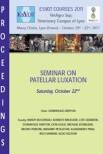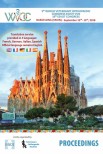Objective—To determine concentrations of receptor activator of nuclear factor-κB ligand (RANKL) and osteoprotegerin (OPG) in equine chondrocytes and synoviocytes and to quantify changes in the OPG:RANKL ratio in response to exogenous factors.
Sample Population—Samples of articular cartilage and synovium with grossly normal appearance obtained from metacarpophalangeal and metatarsophalangeal joints of 5 adult (1- to 8-year-old) horses.
Procedures—Cell cultures of chondrocytes and synoviocytes were incubated with human recombinant interleukin-1B (hrIL-1β; 10 ng/mL), lipopolysaccharide (LPS; 10 μg/mL), or dexamethasone (100nM) for 48 hours. Negative control cultures received no treatment. Cells and spent media were assayed for RANKL and OPG concentrations by use of western blot and immunocytochemical analyses. Spent media were also assayed for OPG concentration by use of an ELISA.
Results—RANKL and OPG were expressed in equine chondrocytes and synoviocytes in vitro. Cell-associated RANKL and OPG concentrations were not impacted by exogenous factors. Soluble RANKL release into media was significantly increased by hrIL-1β in chondrocyte but not in synoviocyte cultures. Soluble OPG release into media was significantly increased by hrIL-1β and LPS in chondrocyte but not in synoviocyte cultures. The soluble OPG:RANKL ratio was significantly increased by LPS in chondrocyte cultures. Dexamethasone decreased OPG expression in synoviocytes.
Conclusions and Clinical Relevance—RANKL and OPG proteins were expressed in equine articular cells. Release of these proteins may affect osteoclastogenesis within adjacent subchondral bone. Thus, RANKL and OPG may have use as biomarkers and treatment targets in horses with joint disease.









